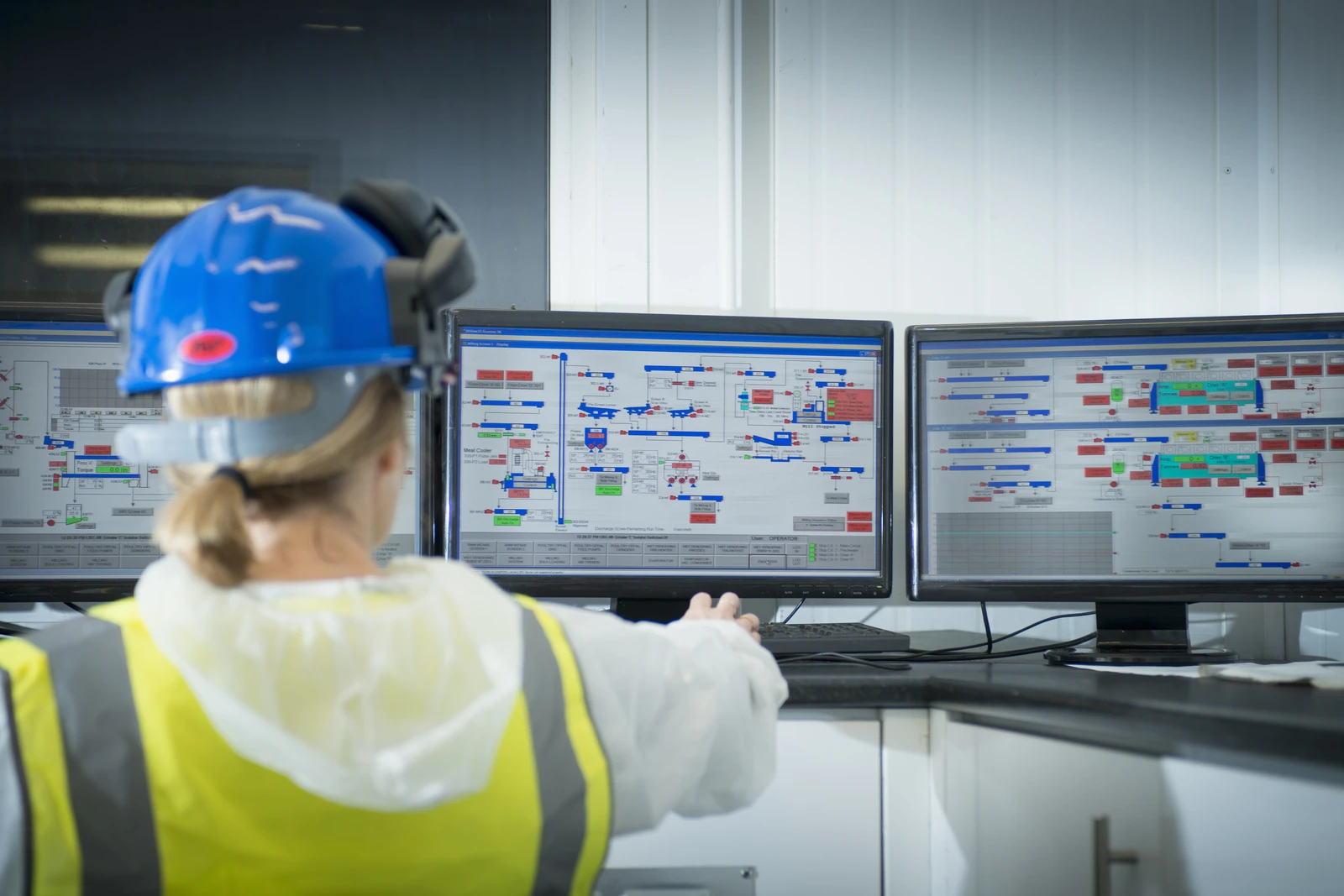In industries where safety is a top priority, automated control systems have revolutionized the way businesses operate by significantly reducing risks to both workers and equipment. Commercial applications ranging from manufacturing plants to large-scale facilities depend on automation to ensure that operations run smoothly and safely. By incorporating technologies like Supervisory Control and Data Acquisition (SCADA) and Programmable Logic Controllers (PLCs), companies can monitor critical variables, improve response times, and minimize the likelihood of accidents. To explore the broader impact of these systems across various industries, check out The Complete Guide to Automated Controls for Industrial and Commercial Applications.
In this blog, we’ll examine how automated controls contribute to improved safety in commercial applications, focusing on key benefits like accident prevention, real-time monitoring, and enhanced compliance with safety regulations.
Real-Time Monitoring for Immediate Response
One of the biggest advantages of automated control systems is their ability to provide real-time monitoring across various operational parameters. SCADA systems, for example, allow operators to keep track of critical variables such as temperature, pressure, and flow rates in large industrial settings. These systems can instantly detect any deviation from normal conditions and send alerts to operators.
Immediate alerts help prevent accidents by giving operators enough time to respond to potentially dangerous situations. For instance, in facilities dealing with hazardous materials or environments, automated systems can trigger shutdown procedures when sensors detect a critical change, reducing the risk of injury or equipment damage. This kind of rapid response can be life-saving and cost-effective, helping to maintain a safe working environment.
Enhancing Safety Protocols with Predictive Maintenance
Accidents in commercial environments often occur due to equipment failure, which can result from worn-out machinery or neglected maintenance. Automated control systems can help prevent these failures by enabling predictive maintenance. Predictive maintenance relies on data collected by automated systems to monitor the condition of machinery and predict when repairs or replacements are needed.
Instead of waiting for equipment to fail unexpectedly, automated systems can alert maintenance teams in advance, allowing them to perform necessary repairs before accidents occur. This proactive approach not only reduces the likelihood of equipment-related accidents but also minimizes downtime, keeping operations running smoothly.
Reducing Human Error
One of the leading causes of workplace accidents is human error, whether due to fatigue, miscommunication, or inadequate training. Automated control systems can eliminate much of this risk by taking over critical tasks and maintaining strict safety protocols. By automating complex processes, companies reduce the need for manual intervention, ensuring that safety procedures are consistently followed.
For example, PLCs are designed to control machinery with high precision, reducing the chance of operator errors that could lead to accidents. Automated systems can be programmed to follow safety protocols to the letter, ensuring compliance with even the most stringent safety regulations.
For more details on the different types of automated control systems that ensure safety, visit Types of Automated Control Systems.
Improved Compliance with Safety Regulations
In industries that must comply with strict safety regulations, automated control systems offer a reliable way to ensure adherence to government standards. Automation ensures that machinery operates within the prescribed safety limits, while SCADA and DCS systems continuously monitor compliance-related variables.
Automated control systems can also log data on safety conditions, providing documented proof that a company is meeting regulatory standards. This is particularly useful during inspections or audits, where having a reliable record of safety compliance is essential. Additionally, by automating safety checks and protocols, companies can stay ahead of changing safety regulations and adapt quickly to new requirements.
Enhanced Worker Safety in Hazardous Environments
In industries where workers are exposed to dangerous environments—such as oil and gas, mining, and chemical processing—automated control systems offer a way to minimize direct human involvement in hazardous tasks. For instance, SCADA systems can control and monitor toxic gas levels or extreme temperatures in real time, ensuring that workers are kept safe from harm.
Automation allows operators to control machinery and monitor systems from a safe distance, reducing their exposure to dangerous working conditions. Robots and automated machinery can also take over tasks that would otherwise put human workers at risk, such as handling hazardous materials or operating in extreme temperatures.
The Role of AI and IoT in Safety Automation
Emerging technologies like Artificial Intelligence (AI) and the Internet of Things (IoT) are enhancing the safety capabilities of automated control systems. IoT sensors can collect real-time data from machinery, while AI algorithms analyze this data to detect potential safety risks before they become critical issues. This allows companies to implement safety protocols that are adaptive and responsive to real-time conditions.
By integrating IoT with automated control systems, companies can achieve even greater levels of safety. AI can predict potential hazards and suggest preventive measures, while IoT ensures that safety data is communicated across all systems, creating a cohesive and highly responsive safety network.
Key Benefits of Automated Safety Controls
There are numerous benefits to implementing automated control systems in commercial settings, particularly when it comes to safety:
- Reduced Risk of Accidents: Automation reduces the likelihood of human error and ensures that safety protocols are followed without deviation.
- Proactive Maintenance: Predictive maintenance allows for early detection of equipment issues, reducing the risk of accidents caused by equipment failure.
- Improved Regulatory Compliance: Automated systems help companies meet and document compliance with safety regulations, ensuring that operations remain within legal safety limits.
- Enhanced Worker Safety: Automation keeps workers out of dangerous environments, ensuring their safety while maintaining operational efficiency.
Stay Safe with TRLINK’s Automated Solutions
Automated control systems have transformed how industries approach safety, reducing the risks associated with human error, equipment failure, and hazardous environments. By integrating advanced automation technologies, companies can protect their workers and maintain the highest levels of safety compliance.
To explore how automated safety controls can improve your commercial operations, schedule a consultation with TRLINK today. Our experts will help you implement tailored automation solutions that prioritize safety while enhancing efficiency.


